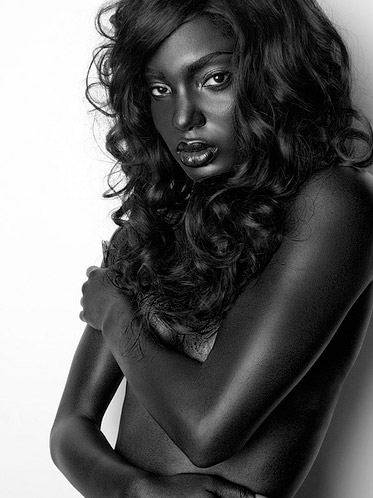
Image by Half Pinay – Laretta Houston.
There’s a really interesting, in-depth article about the research around women and sexual desire in the NYT Magazine. Caveat that it’s in the NYT Magazine because if you don’t clear your cookied or use some kind of bugmenot, they still make you log in to read it — and yes, I still find this a terribly outdated and invasive and annoying thing to send my readers to. I still wish they’d stop it so reading their content was more accessible for everyone. Women Who Want to Want by a writer to watch our for, Daniel Bergner is something I’d like to see widely read.
Anyway… This thing is six long fascinating pages long, and totally riveting. I have some very provocative highlights below. The first thing I thought of when I read this article is the concept of so-called “lesbian bed death”. This is the term for a theory put forth by Pepper Schwartz that lesbians have less sex than other couples, especially over time when in long term relationships; that the sex “dies” off after the couple is established. I think that LBD is both a phenomenon and a self-fulfilling prophesy. But this NYT article addresses this issue (though not directly in a lesbian context) and also surprisingly covers the arena of desire, unconventional sexual interests (like, um, bondage or spanking) and how these interests have been typically categorized as mental illnesses — and that times, they have changed. I do enjoy seeing this included in the conversation. First snip, from Women Who Want to Want by a writer to watch out for, Daniel Bergner:
(…) MORE THAN BY any other sexual problem — the elusiveness of orgasm, say, or pain during sex — women feel plagued by low desire. The problems often overlap, but above all the others that can thwart an erotic life, the remoteness of lust is what impels women to seek treatment. And as Brotto discusses the disorder, she is not talking about something physical. She regularly wires the genitals of her patients to a photoplethysmograph to measure whether the women respond with surges of vaginal blood flow while they watch a pornographic video. Almost always, they do.
Brotto is dealing in the domain of the mind, or in the mind’s relationship to the body, not in a problem with the body itself. Beneath Klimt’s couple, she opened yellow case folders and described the desolation and bewilderment recorded in her notes. She spoke about a woman in her 40s who, years ago, had sex with her husband as often as seven times in a day but who now, more than a decade into a marriage with this still-handsome man, cringes at the very same gesture, the very same touch to her back, that once electrified her. (…) judging by what figures exist, Brotto says, between 7 and 15 percent of all young and middle-aged women — an age range that researchers generally set between the neighborhoods of 20 and 60 — feel distressed over the absence of desire. (…)
And then further into the piece, here’s a taste of this:
All of the variations and unknowns and insinuations of patriarchal perspective help make Brotto’s work on the D.S.M. more than a little fraught. But then, the chapter called “Sexual and Gender Identity Disorders” in the 900-page manual barely holds an unfraught sentence. The American Psychiatric Association has appointed a panel of 13 psychologists and psychiatrists to revise the chapter for the new edition, to be titled the D.S.M.-V; it will be the fifth version (not counting a couple of intermediary alterations) since the A.P.A. put together the original manual in 1952 and the first since 1994. The 13 have divided the conditions according to their specialties, and as they aim to improve diagnostic language, they’re shadowed by sometimes-fierce detractors who argue that certain — or all — of the chapter’s disorders should be deleted.
The section on deviant desires, to take one example, is denounced by advocates for alternative sexuality as stigmatizing those whose lusts, no matter how unusual, are harmless, or those whose erotic play, no matter how unsettling, is consensual. Should a man with a foot fetish be branded as mentally ill? Should a woman who finds ecstasy in being elaborately bound and enduring denigration or pain?
Should such people be labeled with psychiatric diseases, though the rest of their lives have no serious dysfunction? Until 1973, homosexuality was among the D.S.M.’s disorders, and critics of the present chapter point to the condemnation the volume once inflicted on gay men and lesbians — condemnation that both reflected and bolstered the prevailing cultural perspective — by way of arguing that the current manual, the D.S.M.-IV, is full of unfounded and damaging sexual judgments. Many on the panel, which probably won’t, in the end, do much in the way of deleting conditions, maintain that the chapter on sexuality and gender identity doesn’t brand people too readily with disease. They note that, aside from exceptions like patients with pedophilia, only those who are distressed meet the threshold for diagnosis. In turn, the critics respond that such distress stems not from within the individual but from the infliction of societal standards, from the culture’s disapproval and aversion and therefore, in part, from the D.S.M. itself. This, they emphasize, was why the A.P.A. finally removed a last remnant of the homosexuality diagnosis — what was known as “ego-dystonic” homosexuality — in 1987.
Though many therapists dismiss the manual as useful for only the numbered codes they scribble on reimbursement forms, subtly the D.S.M. permeates the consciousness of the profession. The book is required reading for almost every psychologist and psychiatrist in training. It delineates the conditions studied by researchers, and it quietly underlies our comprehension of ourselves. Its disorders define norms. Brotto has been constructing an expanded set of criteria for H.S.D.D. with the awareness that she may be shaping, amid a good deal of debate, the way vast numbers of women understand their sexual selves. (…read more, nytimes.com, thanks DC!)




